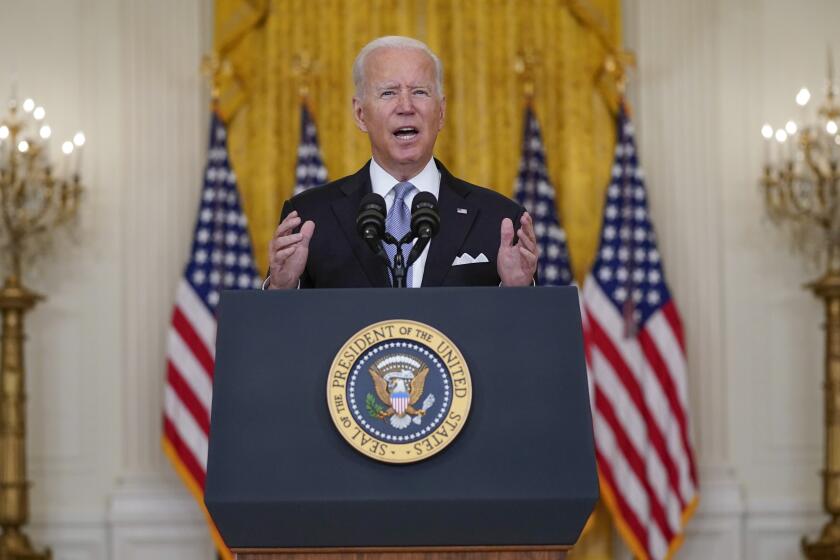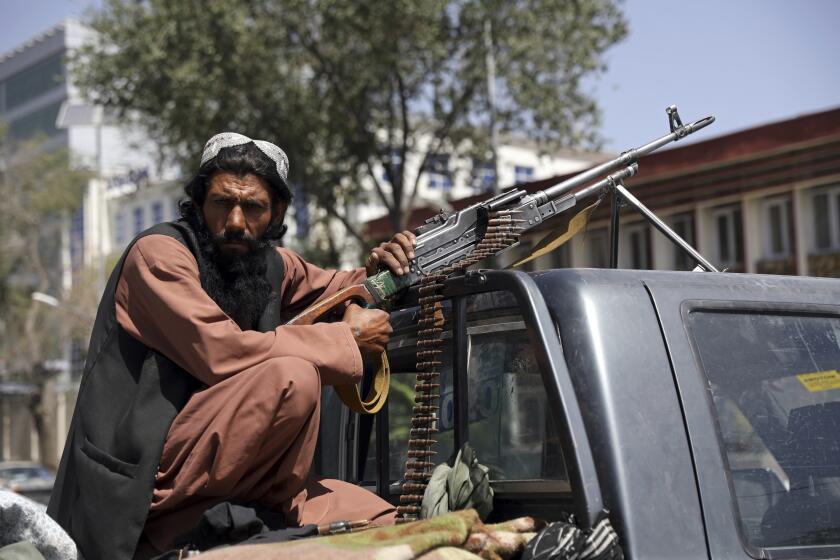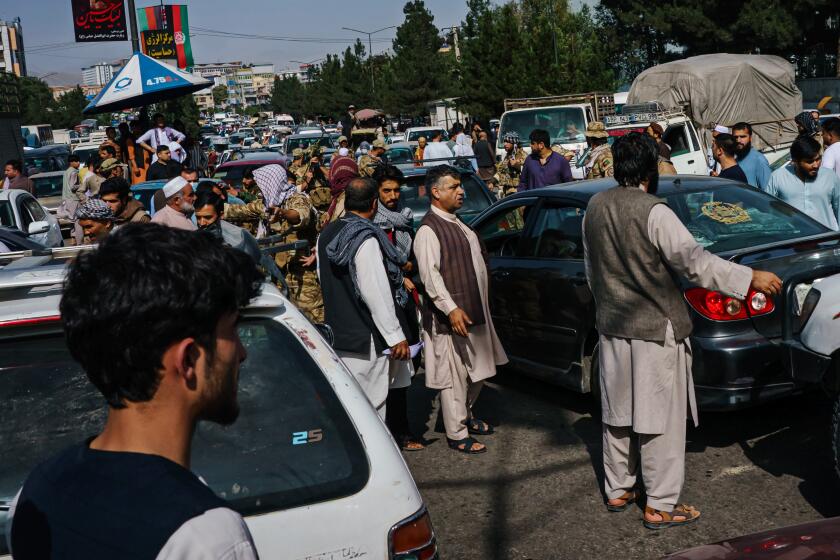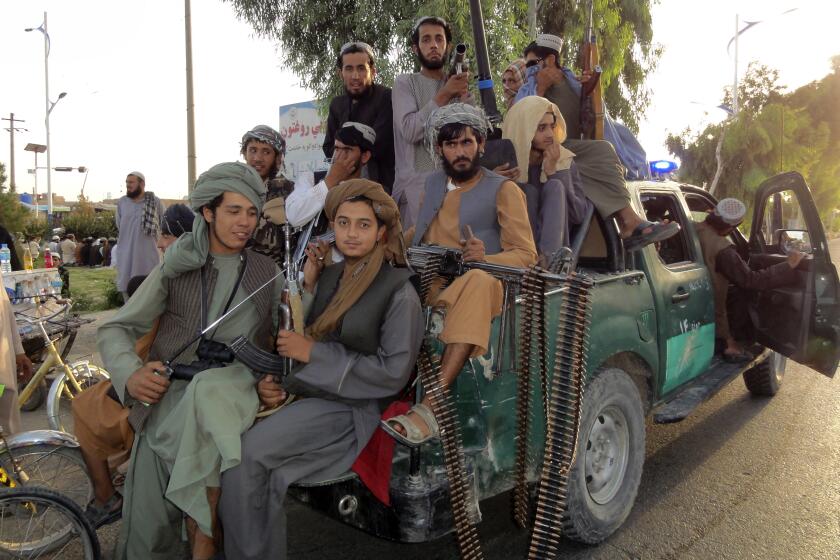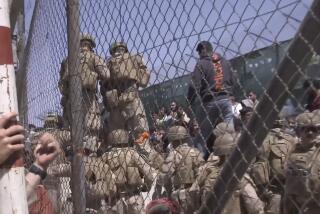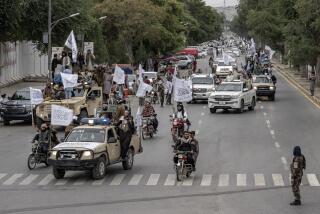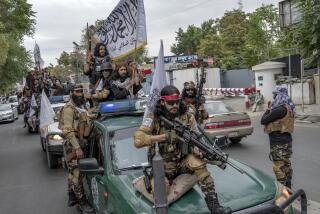7 reported dead amid chaos at Kabul airport as desperate Afghans try to flee
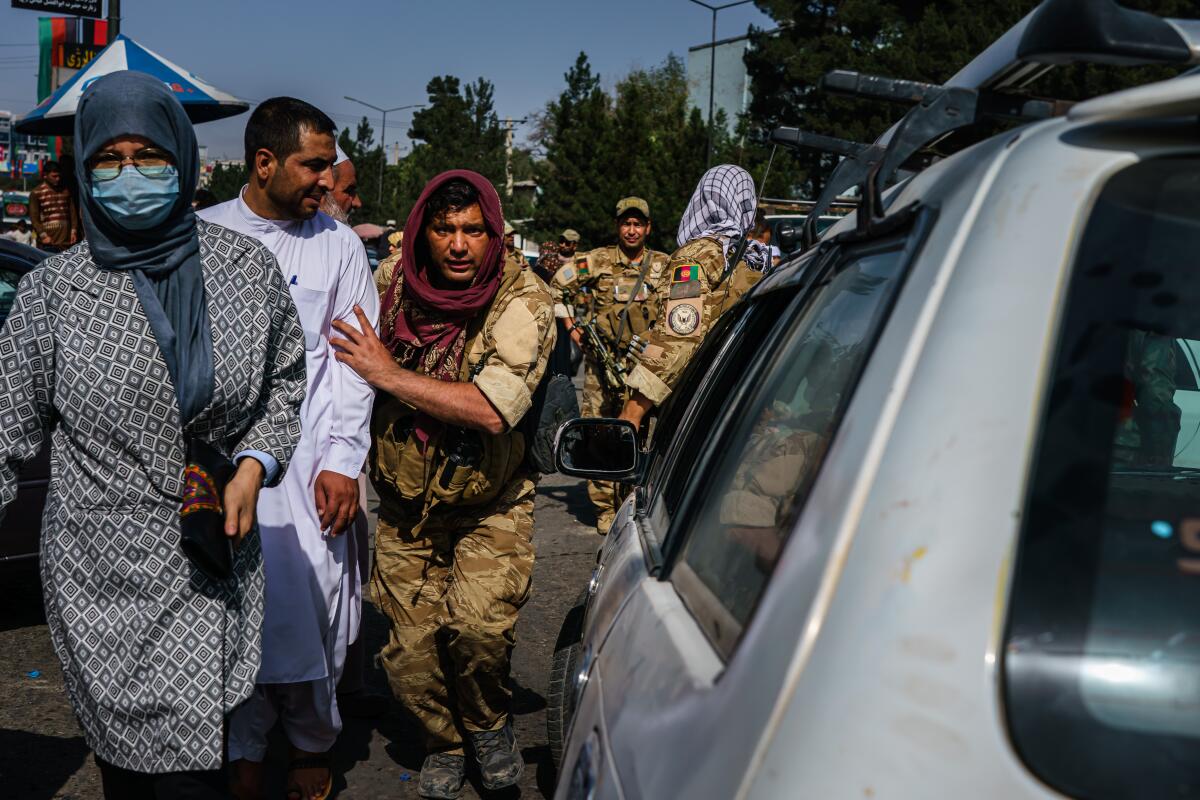
KABUL, Afghanistan — Wrenching scenes unfolded Monday at Kabul’s airport as thousands of Afghans desperate to flee their Taliban-conquered homeland clambered over barriers and thronged the tarmac, with some even clinging to the side of a U.S. military transport plane before falling away. At least seven people were reported to have died in the chaos.
The American military has taken control of the evacuation of diplomatic staff and allies, which has turned into a harrowing capstone on the two-decade U.S. military mission. But the deadly tumult left the airlift effort in crisis. All flights, civilian and military, had been suspended until the runway was secured, but Pentagon spokesman John Kirby said later that airport operations had resumed.
Seven people were killed in the airport vicinity, the Associated Press reported, and Kirby confirmed that two “armed Afghans” were killed by U.S. forces. The Taliban controls all land crossings out of the country, and for now, the capital’s airport is the only evacuation route.
The horrific airport images — videos of men running alongside the taxiing C-17 Air Force plane and scrambling to grab its exterior, and subsequently at least two falling bodies visible after the craft was airborne — drew shock and dismay from around the world. President Biden called the images “gut-wrenching” but said he stood by his decision to withdraw American troops from Afghanistan.
The U.S. failure to leave in place a stable government and a dependable Afghan military was evident a day after the Taliban assumed control of the capital and President Ashraf Ghani fled the country. Most people in the capital cowered in their homes, staying out of sight. In the early morning, normally traffic-choked streets were eerily empty as Taliban fighters, many clad in sandals and the traditional shalwar kameez, wielded automatic weapons on the streets and in city squares.
The fighters displayed a disconcerting mix of menace and nonchalance. A young Taliban commander with bloodshot eyes and an oversized gold watch sternly waved off a request to take his picture, saying there was no permission for photographs. Then he smiled.
“Have a nice day,” he said.
But there was little doubt that the Taliban — which swept from the provinces and into the capital in less than a week — was in charge. Near a United Nations compound in the city center, one fighter posed for a selfie in front of an armored vehicle. Others perched on plastic chairs in the scorching heat, eating breakfasts of Afghan bread, while a comrade casually balanced a rocket-propelled grenade launcher on two fingers.
President Biden addressed the American people about the messy U.S. pullout from Afghanistan. He stood by his decision and said there was no good time to leave.
At the city’s landmark Massoud Circle, a short distance from the former headquarters of the U.S.-led military coalition, half a dozen Taliban fighters cradled American-made rifles. One was decked out in body armor and a helmet.
In public statements, the Taliban leadership put heavy emphasis on a law-and-order message.
“The situation in Kabul is under control,” Taliban spokesman Zabihullah Mujahid said in a Twitter post. People “involved in mischief” were being arrested, he said, and there were strict orders against looting or ransacking homes and businesses.
The Taliban has regained power after nearly 20 years. Here’s what that can mean for average Afghanis.
Everywhere in the Afghan capital, there were signs of residents’ keen awareness of the austere sensibilities of the newly arrived Taliban, which terrorized the population with harsh restrictions during its five-year rule that ended 20 years ago. The group adheres to a radical interpretation of Islam that bans the full participation of women in society, forbids the mixing of the sexes and frowns on education, music and other forms of art.
At neighborhood beauty salons, the usual gaudy images of women with elaborate coiffures and heavy makeup were removed or painted over. Cafes that had been known as hangouts for young people and couples were shuttered and deserted.
On the route to the airport, the sound of gunfire could be heard, and a massive traffic jam developed, with cars facing in every direction as some drivers tried to turn around and extricate themselves while others sought to plow forward. A hulking troop transport truck sat abandoned and apparently inoperable.
In Kabul, hunkering down and fearing the worst as the Afghan capital changes hands.
Amid pandemonium, fear and diplomacy, the shape of the new order in Afghanistan was still emerging. At the State Department, spokesman Ned Price said U.S. officials were participating in talks in Doha, Qatar, with representatives of the Taliban and an Afghan delegation.
Kirby, the Pentagon spokesman, said Gen. Kenneth McKenzie, the head of U.S. Central Command, which oversees operations in Afghanistan, had contacted Taliban leaders and warned them that any attack on U.S. assets would be met with a “forceful” response.
Away from the airport, Kabul city parks that had sheltered thousands of displaced people from the provinces were largely empty, and local people said families who had been sleeping in the open air had been told to go home.
In an incongruous assumption of normal police duties, Taliban fighters checked identification documents, inspected vehicles and conducted pat-downs. Many normally bustling public venues were shut tight, including the campus of Kabul University and a business center where many Afghans go to apply for visas.
A young Afghan woman who was about to graduate from college tells of anxiety, fear and dashed hopes amid the Taliban takeover of her country.
But not everyone had yet given way to the anticipated change in the social order of a capital that for years had grown accustomed to more liberal ways. In a Kabul district dominated by ethnic Hazaras, a woman walked down the street wearing high heels. In earlier Taliban times, women could be publicly whipped for showing an ankle.
Others waited to take their cues from the conquerors. On Chicken Street, a thoroughfare popular with tourists and foreigners, some shop owners lingered outside their shuttered stores, waiting to see if a Taliban representative would give them permission to open their businesses.
The Taliban, too, seemed to be getting the lay of the land. Shop owner Mohammad Reza said that, a day earlier, Taliban fighters drove up and down a main street taking pictures and surveying the neighborhood — then drove off without doing anything further.
Reza said he planned to continue selling his wares of flags and ceremonial artifacts, if he can. Near his shop, a guard post that used to be manned by police was instead presided over by a Taliban fighter.
Breaking News
Get breaking news, investigations, analysis and more signature journalism from the Los Angeles Times in your inbox.
You may occasionally receive promotional content from the Los Angeles Times.
Reza, a married 25-year-old father of a 6-month-old baby, said he would leave if he could, but did not have the means.
“We want to go, but now we don’t have the money,” he said.
At the United Nations, the Security Council met in emergency session to discuss the Afghan crisis. Secretary-General Antonio Guterres called on the Taliban to respect human rights and on the international community to “stand together, work together and act together” to protect the Afghan people.
The world, he said, “is following events in Afghanistan with a heavy heart and deep disquiet about what lies ahead.”
Yam reported from Kabul and King from Washington. Times staff writers Tracy Wilkinson in Washington and Nabih Bulos in Dubai, United Arab Emirates, contributed to this report.
More to Read
Sign up for Essential California
The most important California stories and recommendations in your inbox every morning.
You may occasionally receive promotional content from the Los Angeles Times.
